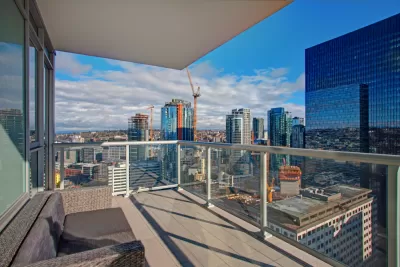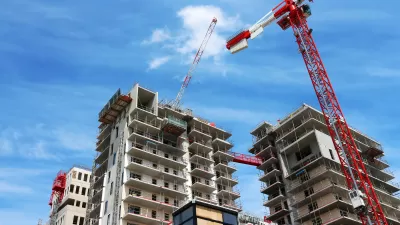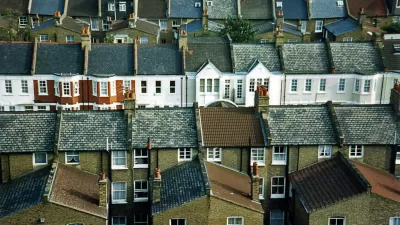Applied to roads, the theory of induced demand says new construction only brings out more users. But can something similar be said of housing? According to this research, the likely answer is no.

Pointing to an upcoming paper studying whether new luxury housing raises rents, Joe Cortright makes a case that induced demand theories for housing may be off-base. "The induced demand theory applied to housing," he writes, "is that building new housing somehow signals a big change in the neighborhood's amenities and livability and the new supply of housing triggers an even bigger increase in demand."
But while induced demand has been shown to apply to highway construction, a key difference between roads and housing is that road users pay a "zero price" to use the amenity. "Thus capacity (and willingness to tolerate delay) are the only things regulating demand, and when capacity is expanded, demand responds quickly," Cortright writes. The case is different for housing, which users pay a premium for. "When you actually price new capacity at even a fraction of its cost, demand evaporates."
Cortright discusses the paper's findings, which show depressed rents in buildings immediately surrounding new construction, drawing on data from 100 apartment buildings in 11 cities. The results appear to support the supply side theory and cast doubt on induced demand.
FULL STORY: Another housing myth debunked: Neighborhood price effects of new apartments

Study: Maui’s Plan to Convert Vacation Rentals to Long-Term Housing Could Cause Nearly $1 Billion Economic Loss
The plan would reduce visitor accommodation by 25,% resulting in 1,900 jobs lost.

North Texas Transit Leaders Tout Benefits of TOD for Growing Region
At a summit focused on transit-oriented development, policymakers discussed how North Texas’ expanded light rail system can serve as a tool for economic growth.

Using Old Oil and Gas Wells for Green Energy Storage
Penn State researchers have found that repurposing abandoned oil and gas wells for geothermal-assisted compressed-air energy storage can boost efficiency, reduce environmental risks, and support clean energy and job transitions.

Private Donations Propel Early Restoration of Palisades Playground
Los Angeles has secured over $1.3 million in private funding to restore the Pacific Palisades playground months ahead of schedule, creating a modern, accessible space that supports community healing after recent wildfires.

From Blight to Benefit: Early Results From California’s Equitable Cleanup Program
The Equitable Community Revitalization Grant (ECRG) program is reshaping brownfield redevelopment by prioritizing projects in low-income and environmental justice communities, emphasizing equity, transparency, and community benefits.

Planting Relief: Tackling Las Vegas Heat One Tree at a Time
Nevada Plants, a Las Vegas-based nonprofit, is combating the city’s extreme urban heat by giving away trees to residents in underserved neighborhoods, promoting shade, sustainability, and community health.
Urban Design for Planners 1: Software Tools
This six-course series explores essential urban design concepts using open source software and equips planners with the tools they need to participate fully in the urban design process.
Planning for Universal Design
Learn the tools for implementing Universal Design in planning regulations.
Ascent Environmental
Borough of Carlisle
Institute for Housing and Urban Development Studies (IHS)
City of Grandview
Harvard GSD Executive Education
Toledo-Lucas County Plan Commissions
Salt Lake City
NYU Wagner Graduate School of Public Service





























